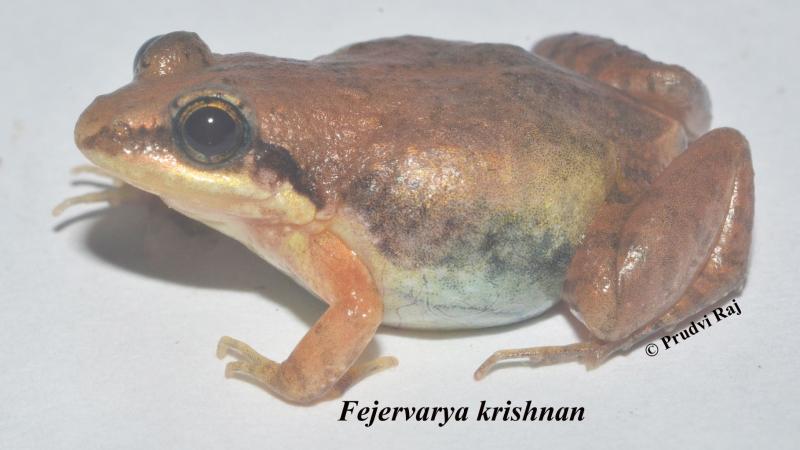
Following the recent discovery of a terrestrial cricket frog from Goa, scientists have discovered two new species from Peninsular India, one each from the Eastern Ghats and the Western Ghats. A collaborative effort by researchers from the Wildlife Institute of India (WII), Zoological Survey of India (ZSI) and North Orissa University is behind this remarkable feat. The discovery now takes the list of cricket frogs in the Indian subcontinent to over 30 species. The study detailing the discovery is published in the journal Records of the Zoological Survey of India and is funded in part by the Department of Biotechnology (DBT) and the Science and Engineering Research Board (SERB).
The Asian cricket frogs of the genus Fejervarya belong to the Dicroglossidae family. They are commonly called ‘cricket frogs’ because their calls resemble that of a cricket’s chirp. These frogs are semi-aquatic and are mostly found near ponds, streams, rivers and paddy fields.
The researchers have named the new species from the Eastern Ghats as Fejervarya kalinga, after the ancient kingdom of Kalinga that comprises the coastal regions between the Mahanadi and the Godavari rivers. The other species, found near Jog falls in Karnataka, is named Fejervarya krishnan after the renowned biologist late Dr K. S. Krishnan for his immense contribution in the field of biological sciences in India.
Both these species of frogs live in hill streams that flow all around the year. F. kalinga is one of the largest cricket frogs at 6.5 cm in length, and F. krishnan, at 2 cm, is one of the smallest members of the group in India. The breeding seasons of the two species are also interesting. “Amphibians are generally active breeders either during pre-monsoon, monsoon or post-monsoon, but most of the Fejervarya frogs breed during monsoon since they prefer shallow waters, mud pools and paddy fields. However, F. kalinga breeds in the winter season”, says Dr. Prudhvi Raj, a Post-Doctoral Researcher at the WII, who is the lead author of the current study. “There could be many more such exciting features regarding the call patterns, breeding behaviour and other characteristics which need to be explored”, adds co-author Dr. K. P. Dinesh, a scientist at the ZSI.
The samples of F. kalinga and F. krishnan were collected long ago by eminent Indian herpetologist Prof. Sushil Kumar Dutta and Dr. Prudhvi Raj respectively. However, there was a delay in their formal scientific description due to the confusion in the taxonomy of the genus Fejervarya, say the authors. Also, since the morphological features of the frogs in this genus are identical to one another, it is hard to distinguish them. The species description was based on the 'integrated taxonomic approach' where physical characteristics, their geographic isolation from other members of the population and the genetics of the frogs were studied to confirm that it is a new species.
In the last few years, discoveries of mammals and birds in India are rare. However, scientists have been successful in finding several new species of amphibians and reptiles from all over the country. With an increase in funding for lesser-known taxa, improved taxonomic techniques and more people getting involved in research in these fields, we can expect many discoveries of more new species in the coming years. “There are many more novel species of amphibians and reptiles yet to be formally discovered from the Eastern and Western Ghats, and the endeavor of many young researchers is progressing in the right direction to explore India’s rich biodiversity wealth”, signs off Prof. Dutta.
